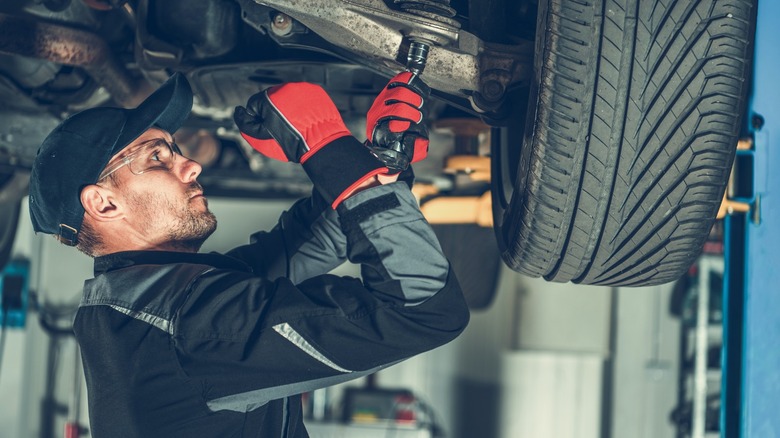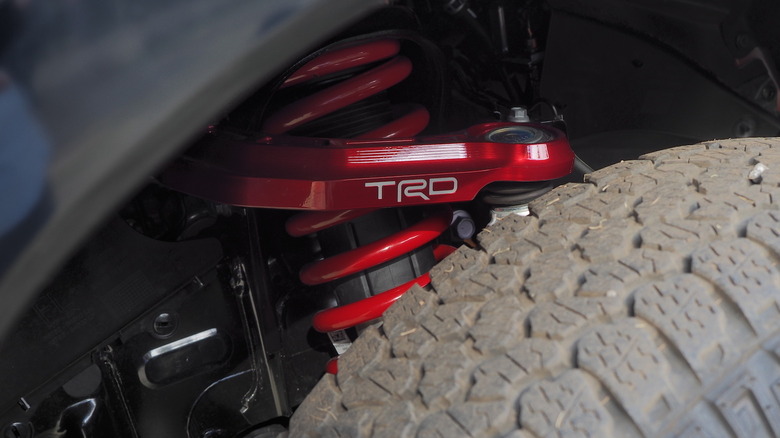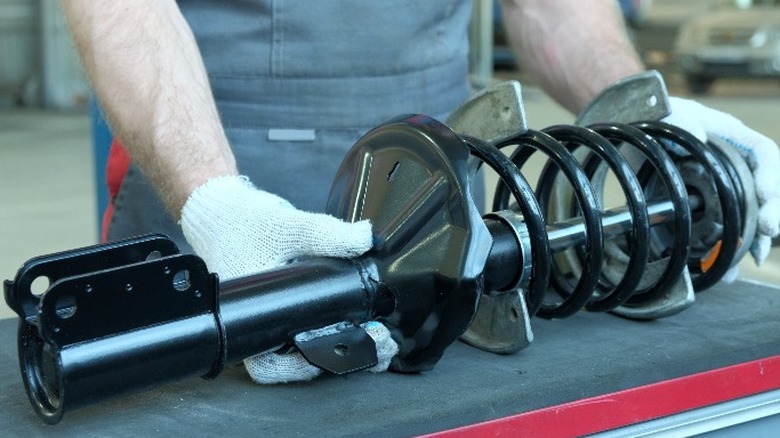Car Struts Vs Shocks: What's The Difference?
Your car is composed of thousands of individual parts that work together to carry you down the road. Some of those components are large and well-known — for example, most people understand that the engine is what gives a vehicle its power. Other parts are less well-known or misunderstood. Even highly critical components, like shocks and struts, can be confusing for many people. It's understandable. The average person isn't a mechanic, and most people don't perform their own auto repair work. Making things even more confusing is the fact that shocks and struts are both suspension system components that perform similar functions. However, despite their similarities, shocks and struts are not the same thing.
While shocks are standalone parts that work to absorb vibrations, bumps, and bounces, struts are single units made of both shocks and coil springs. As such, struts are more complex than shocks. In addition to absorbing vibrations, struts contribute to the car's steering and braking systems, as well as helping to support the vehicle's weight. Let's take a deeper look.
What are shocks?
Shocks — also known as shock absorbers or suspension dampers — are parts of your vehicle's suspension system. They're responsible for absorbing and reducing shocks, preventing body roll while turning at high speeds, and controlling spring and suspension movement. Shocks are typically located behind the wheels and work in tandem with coil or leaf springs. As you travel over bumps or hit potholes, your car's springs flex to absorb the impact. But without shocks, each time you hit a bump, the springs would bounce until the energy dissipates naturally. Shocks work to absorb the excess energy by damping the springs' movement, preventing you from experiencing an extremely bouncy ride.
Shocks are relatively simple devices. Most are built using a hollow tube filled with oil, gas, and a piston. As you drive over bumps and uneven terrain, the piston travels through the tube and pushes the oil through a small opening at the opposite end of the cylinder. When the piston moves and displaces the oil, it creates a damping force that works to absorb shocks and maintain a comfortable ride.
What are struts?
Like shocks, struts are vital parts of a car's suspension system. They even perform some of the same functions, like absorbing shocks and damping vibrations. But shocks and struts are far from the same thing. Strut refers to a combined shock and coil spring unit. In that sense, every strut contains a shock, but struts do a lot more than just absorb bounces. They're also critical structural components, helping to support the vehicle's weight by replacing the upper control arms and ball joints. Struts also help maintain wheel alignment. They usually connect to the steering knuckle via two large bolts. On many vehicles, these bolts serve as adjustment points for the car's front end, making the struts vital components of both the suspension and steering systems.
Struts are composed of a few parts. There's the central shock, the surrounding coil spring, and a rigid housing. These components all work together to absorb vibrations, support the car's weight, and maintain wheel alignment.


